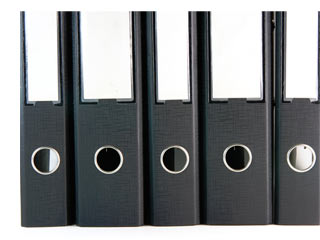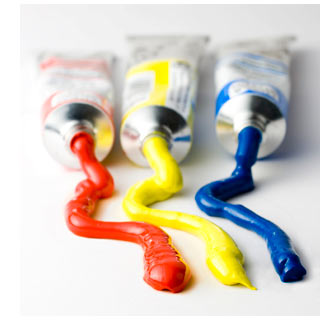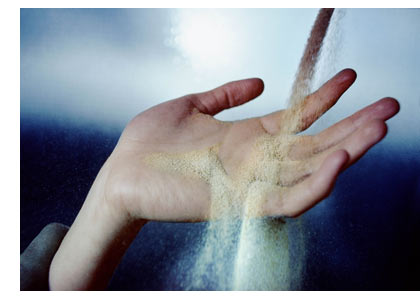First I'd like to go on record that I HATE blog posts about microstock which just list a few banal and obvious facts of microstock life "the more images you upload the more you will earn". "You can get more sales if you take better images" (with of course no explanation of what constitutes a better image). I think I'll scream if someone else writes "you can earn a good living shooting photos of the crap found at the back of the closet"... think of the career opportunities that must bring!
Below are what I think are the 10 most important rules in microstock today, and unlike the biblical commandments that were written in stone these rules change as the industry changes (which it somewhat annoying keeps doing!).
1. Research it before the shoot. You have a great idea? You think it will sell well? Have a look on istock or fotolia to see if it's there already. If a whole page of people have already beaten you to it then cross it off your shoot list and do something else. If there are only a couple of similar images and you can improve on the quality then have a quick look at the sales levels, did they sell 0 times since 2007? Tools like picniche are there to help so use them.
2. Shoot it right first time. This means spotless subjects and optimal camera settings every time. It's easy to get lazy and think "I'll photoshop it later" that usually ends up taking much longer than getting it right in the first place. Isolating things on white? - get a light tent or cyclorama instead of cleaning up every photo you take using makeshift old bedsheets as a background. Need more light? then buy more lights and stop struggling with an anglepoise in the spare bedroom studio - that's fine for cutting your teeth and learning technique but not for 'work'. A lot of what is needed for microstock is a routine of doing the same over and over, but that does NOT mean making the same compromises and work-arounds over and over.
3. Despite all the other stuff you have to do, it's still about the photos - without good photos you are screwed, that might sound obvious but it's easy to think that microstock is all about analysis of stats, choosing subjects and good keywording etc. Back in 2005 it really was possible to use research and technical skills to earn from microstock with quite 'ordinary images' like cloudy skies because nobody else was doing it. While 'ordinary images' are still fine, to really make it you need a strong portfolio. That might mean either superb generic stock images or a tight specialism and some targeted marketing. The great thing is that microstock will 'grow' as you learn so long as you get over those initial frustrations, you can earn at any level. What you can't earn from is just uploading a few random photos from your hard drive and waiting for some money to come in. It's hard at first to see it, but with some experience you will spot the difference between a great stock photo and one that will only make a pretty desktop background.
 4. Organize like you have OCD - something that comes easily to a lot of photographers (I'd love to know the stats of how many obsessive compulsives own vast amounts of photography equipment all sealed away in alphabetised pelicases... Be just as picky about your work environment as the subtle details in your images and their composition. Saving a minute here and there over and over again soon ads up, and wasting that time is so easy to do without noticing. This goes for investing in computer equipment too, if it's older than two years then there is probably something a lot faster available. Sitting and waiting more than a second or two for things to open and save is not necessary, and allows your mind to wander onto distractions.
4. Organize like you have OCD - something that comes easily to a lot of photographers (I'd love to know the stats of how many obsessive compulsives own vast amounts of photography equipment all sealed away in alphabetised pelicases... Be just as picky about your work environment as the subtle details in your images and their composition. Saving a minute here and there over and over again soon ads up, and wasting that time is so easy to do without noticing. This goes for investing in computer equipment too, if it's older than two years then there is probably something a lot faster available. Sitting and waiting more than a second or two for things to open and save is not necessary, and allows your mind to wander onto distractions.
5. Respect thine agencies. It's unwise and more importantly somewhat fruitless to spend time on message boards writing negative comments about an agency you use. Don't bite the hand that feeds. Making well thought criticisms is another matter, as is trying to get answers from a support department if something is wrong. In 8 years of microstock there is only one agency I have had to ask for help from support - and that agency is one that seems to have gone down the pan - hence the payment problem I had. It's probably more likely that you have not read all the instructions or misunderstood a procedure. If it's an image rejection you disagree with then just move on and compare it to the feedback you got from other sites - the time taken to chase image rejections from one agency usually does not justify the expected income, but make your own decisions on that.
6. Thou shalt not covert thy neighbour's images - copying other peoples work is bad for so many reasons, it's also really un-fulfilling to spend your life trying to be just like someone else. You don't win a race by following someone else. Worse, it leads to microstock becoming trapped in the same 'rut' that macro once was churning out the same subjects over and over. Buyers always say they are looking for original and creative content, and while when push comes to shove they often err on the side of caution buying something quite dull and mainstream, trying to compete in the most saturated and already fully covered subjects is business suicide.
 7. Diversify and even 'dabble' in interesting creative things - but do so intelligently and research before you start. There is plenty of scope in a photography career for creativity, somewhere like flickr or 500px are great places to try something new, find inspiration and network with other great photographers. Understand you are doing it for either the pleasure, education or money, or perhaps a bit of all three. But: plan to be able to measure the results by goals, image views, happiness or some other metric. Without creativity you are left with a treadmill of creating one drab and un-inspiring stock image after another, the end of your microstock career (boredom) will be just around the corner.
7. Diversify and even 'dabble' in interesting creative things - but do so intelligently and research before you start. There is plenty of scope in a photography career for creativity, somewhere like flickr or 500px are great places to try something new, find inspiration and network with other great photographers. Understand you are doing it for either the pleasure, education or money, or perhaps a bit of all three. But: plan to be able to measure the results by goals, image views, happiness or some other metric. Without creativity you are left with a treadmill of creating one drab and un-inspiring stock image after another, the end of your microstock career (boredom) will be just around the corner.
8. Write it down. Rasmus rasmussen has his moleskine notebooks, I have post-its-o-plenty, a nokia to-do list, a google doc and folders of paper and electronic clippings (sounds messy doesn't it) keep good notes of your ideas and you will NEVER have a shortage of things to shoot and do - in fact you might find yourself with a miserably endless list of things to shoot that hang over you like a storm cloud.
9. Thou shalt use the force Luke, umm well, at least 'understand your feelings you will'. If you dread doing something or it feels like a chore those feelings are pointing directly towards a problem that you need to fix. Hate keywording? Then there is something wrong with the way you are doing it (can I hear #a spoonful of sugar...?) , or you need to out-source it; the same goes to everything else you do. If you hate doing your accounts or want them done properly then you would employ a professional accountant, the same is true for microstock. Just because you can do it yourself does not mean that you must do it yourself.
 10. Understand Time is money. Doing microstock in spare time as most contributors do it's easy to try and do it on a shoestring, I've written (ranted) before on people balking at the price of the various microstock services available. If you really think that ten minutes of your time spent mucking about with FTP or some other process every day is better than spending a one off $50 on specialist software then good luck! I agree time saving is a fairly nebulous thing to write and it's clear that nobody wastes time by choice, but the issue comes up again and again and spreads like a virus into every part of running your business either full or part-time. Workflow ideas for saving time.
10. Understand Time is money. Doing microstock in spare time as most contributors do it's easy to try and do it on a shoestring, I've written (ranted) before on people balking at the price of the various microstock services available. If you really think that ten minutes of your time spent mucking about with FTP or some other process every day is better than spending a one off $50 on specialist software then good luck! I agree time saving is a fairly nebulous thing to write and it's clear that nobody wastes time by choice, but the issue comes up again and again and spreads like a virus into every part of running your business either full or part-time. Workflow ideas for saving time.
Anyone think I have missed something important off my list?
Some Moral Orel lost commandments perhaps?



Number 6 - Same Images
R. Kneschke (not verified) on Thu, 2010-07-01 12:51Difficult Decisions
Steve Gibson on Thu, 2010-07-01 13:19Yes, and I'm not exactly sure which way I lean sometimes, I know from looking at stats that is 'happy nice' pictures that are selling more, but listen to what micro agencies and buyers ask for words like 'creative and original' get mentioned. The same goes for image acceptance, whenever I try getting anything that is remotely grungy uploaded it heads straight for the reject bin everywhere except at moodboard, where it's accepted and never sells. I hear Yuri talking about (and I forget his exact words) "adding some mess" to the image to make them less perfect. I guess there is a path to tread between not looking too unnaturally groomed and something that is too far from the norm.
I'm sure that's left things just as unclear, perhaps it wound have been better written: 6. ripping things off is bad.
Same problem
R. Kneschke (not verified) on Sun, 2010-07-04 08:53Well done!
ArenaCreative (not verified) on Fri, 2011-04-29 04:55crazy?
Steve Gibson on Wed, 2011-05-04 02:26